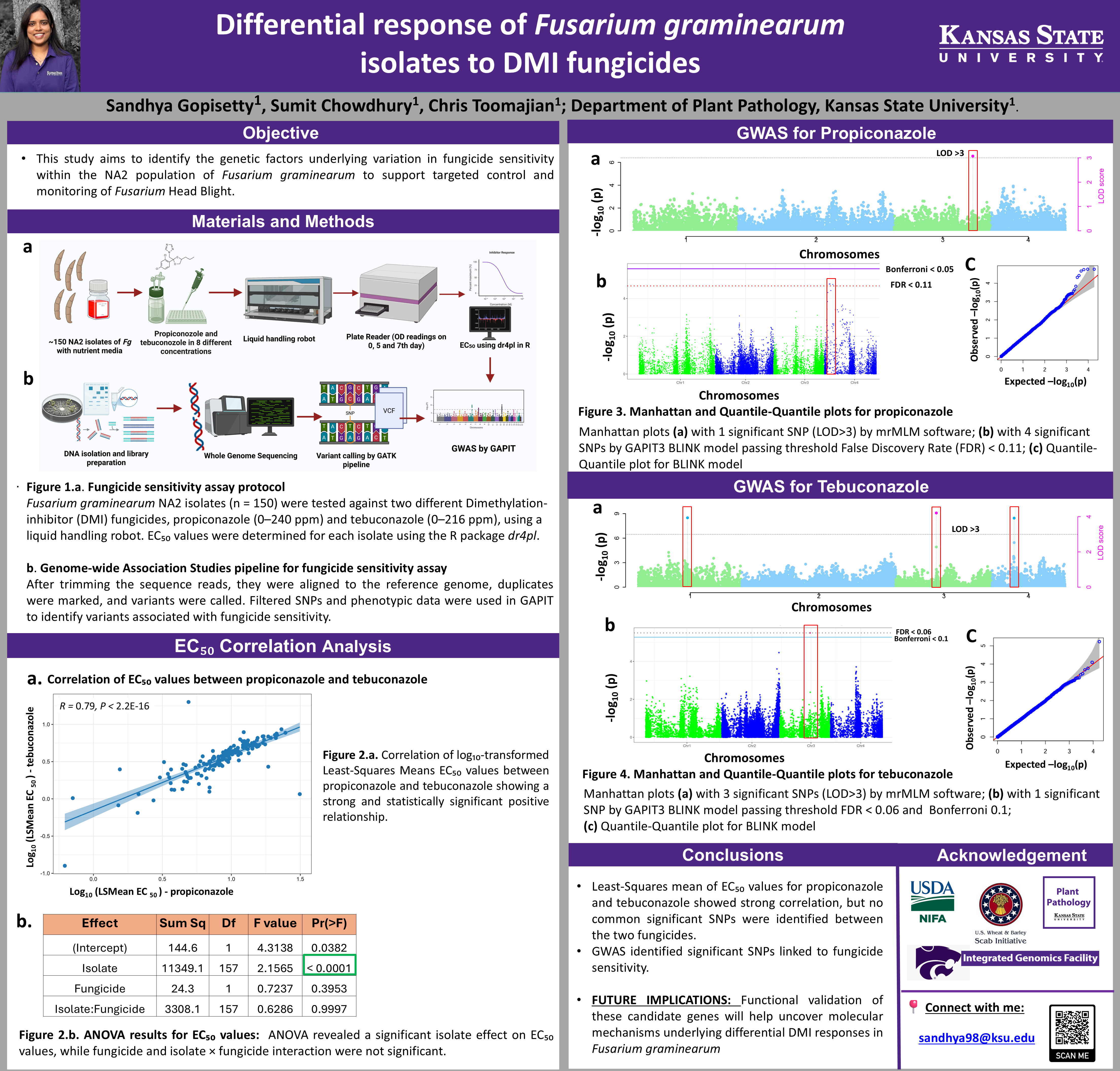Authors: Sandhya Gopisetty, Sumit Chowdhury, and Christopher Toomajian
1. Kansas State University, Department of Plant Pathology, Manhattan, KS
Corresponding Author: Dr. Christopher Toomajian, toomajia@ksu.edu
Presenting Author: Sandhya Gopisetty
Abstract
Fusarium
Head Blight (FHB) caused by a fungal pathogen Fusarium graminearum is
one of the significant constraints to wheat production in the United States due
to its reduced yield and mycotoxin contamination. The intensive application of
fungicides on cereal crops, such as wheat, has led to the development of
resistance in many fungal pathogens that infect them. Historically, populations
of Fusarium graminearum have been mainly treated as homogeneous at the
level of management and resistance breeding. However, this clashes with
documented variation in populations in terms of pathogenic traits, such as
fungicide sensitivity and toxin production. This work aimed to determine the
variation in sensitivity of the F. graminearum NA2 population to
tebuconazole and propiconazole, and to identify the genetic basis of phenotypic
variation, providing targets for disease management. Sensitivity of 150 F.
graminearum isolates towards the two demethylation-inhibitor (DMI)
fungicides was tested using a flat-bottom 96-well plate assay. Absorbance
readings were taken before incubation, and at 5 and 7 days at 405 nm. Effective
concentration 50 (EC50) values were computed using R packages. We used standard
statistical methods to detect associations between genetic variants derived
from whole-genome sequencing and pathogen traits. Using genome-wide association
studies (GWAS), we aim to identify the genetic basis of variability in
fungicide sensitivity. We anticipate our results will aid in developing
strategies to manage FHB outbreaks and will suggest targets for pathogen
control.

